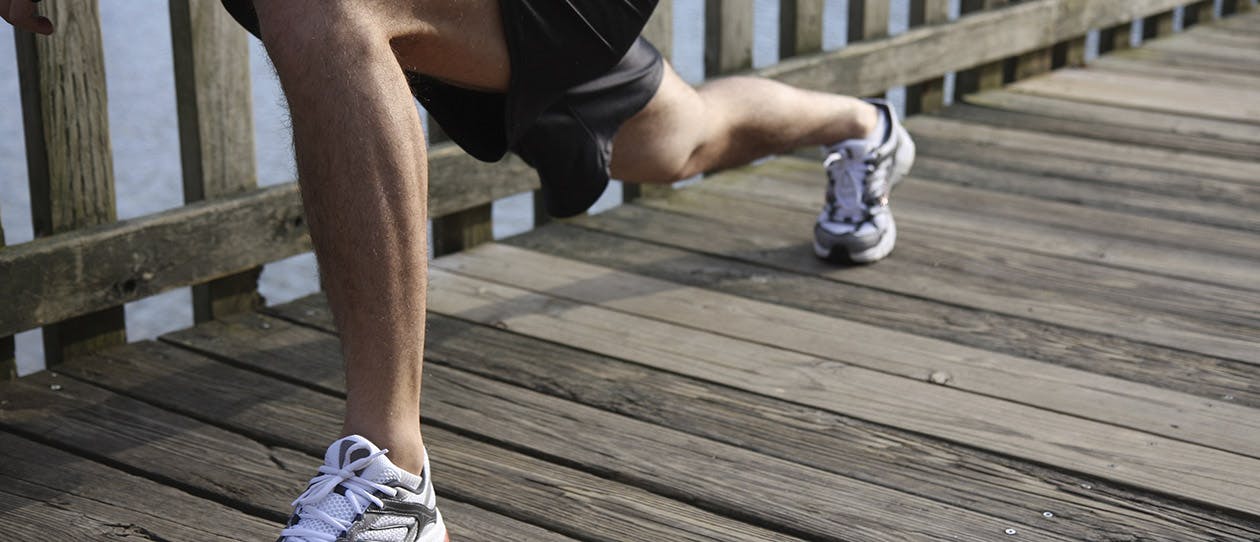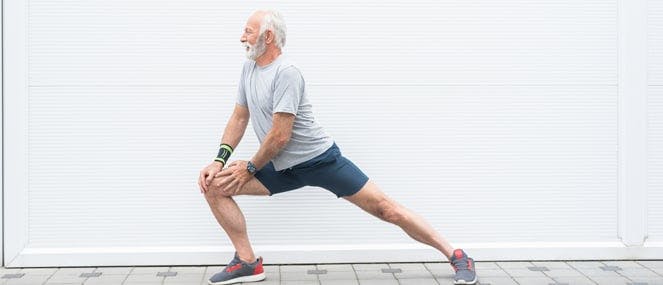
- Health hub/
- Arthritis, joint, bone & muscle/
- Lunging for Stronger, Leaner and Faster Legs


The benefits of lunges
Some of the benefits of incorporating lunges as part of your exercise routine includes:- Strengthens the muscles in your thighs, buttocks, hamstrings, calves and core
- Trains multiple muscle groups all at the same time
- Trains one side of the body independently of the other, which challenges your core, and may improve balance.
- Easily adaptable to suit different levels of fitness and strength
- Requires no equipment, so they can be performed anywhere
- Closely resembles the position of your legs during many activities, such as running
- A good exercise to prepare your body for skiing
- Adding speed or jumps to your lunging adds a cardiovascular benefit
- May help to improve flexibility in the ankle, knee and hip joint
Different types of lunges
Lunges can be modified in many ways to alter their difficulty level. This can range from assisted lunges that only use partial body weight for beginners, to explosive jumping lunges for more advanced training.How to perform lunges -beginner, intermediate and advanced levels
Forward lunge
Level - Beginners
Have your feet split a metre apart, and raise the heel of your back foot.
Lower your back knee towards the ground. Your front knee should not go over your toe.
Push up and back to the starting position for one rep.
Trainers tip - This basic lunge movement is an ideal starting point for beginners. Hold on to a chair or wall for added support if you find this difficult. You can also hold on to dumbbells to increase the difficulty as your strength improves.
Dumbbell alternating lunge
Level - Intermediate
Hold a set of light dumbbells, standing with your feet together, and shoulder width apart.
Take a big step forward with your right leg, dropping down into a lunge.
Immediately ppush back up to the starting position for one rep.
Repeat the same movement, but this time lunge forward on your left leg. Continue to alternate legs until you complete the set.
Trainers tip - This adds dynamic movement to a basic lunge, increasing the difficulty, and further challenging your balance. To make this easier, you can perform alternating lunges without dumbbells.
Plyometric split jumps
Level - Advanced
Have your feet split a metre apart, left foot in front, and be up on the toes of your right foot.
Jump up, and while mid-air, swing your right leg to the front and your left leg to the back.
When landing, absorb your weight, and repeat with minimal rest.
Trainers tip - Also known as jumping lunges; this is a challenging exercise for your muscles, and cardiovascular system. To make these even more challenging, jump higher, or hold on to a set of light dumbbells.
Lunge training tips
- Start out with forward lunges, and progress to the more advanced variations as you get stronger (which may take several weeks).
- Keep your upper body straight and avoid leaning forward. Keep both hips facing frontwards, maintaining good posture throughout.
- Activate your abdominal core during lunges by sucking your belly into your spine.
Control the speed of the downward or lowering phase of each lunge. - Lower your body until both knees are at 90-degree angles and your front thigh becomes parallel with the ground. Don't let the back knee touch the ground during the lowering phase.
- Keep the heel of the forward or lunging foot on the ground, pushing up through the heel on the lifting phase of each lunge
- Track both knees so they move in line with your toes, but don't let your front knee extend over your toes.
- If you feel knee pain during lunges, stop immediately. Seek out a physiotherapist or personal trainer to check your technique.
- If you have a history of knee problems, seek advice before performing lunges.
- Perform 8 - 15 repetitions on each leg for 1 - 2 sets. Increase the difficulty and / or number of sets as your strength improves.
- As you feel more comfortable performing lunges, you can add additional movements such as medicine ball rotations or dumbbell bicep curls
- While lunges target the muscle in your thighs and buttocks, they won't remove fat from that specific location. Combine lunges with cardiovascular exercise and a healthy diet for optimal fat loss.




